Unloved America / New York
The city limits
New York City’s enviable culture and wealth have failed to spread to its northern hinterlands. For ailing cities like Buffalo, it’s do or die time.
New York City is a glimmering global capital of finance, media and the arts; much of the state with which it shares its name is not. Upstate New York, the fat northern tier of the US’s third-most populous state, feels far from Gotham, culturally and economically. The region is a bleak case study in the failures of modern America – deindustrialisation, underinvestment, sprawl, a poor agriculture sector, a brain drain – which few government policies, including last year’s $862bn (€651bn) stimulus bill, seem equipped to combat.
Few regions in the US so thrived during the 19th and early 20th centuries. The opening of the Erie Canal in 1825 connected for the first time the Atlantic Ocean to the Great Lakes. The infrastructure marvel made New York City a major port and centre of American commerce and along the route from Albany to Buffalo secondary cities blossomed. Some of the most prestigious American companies started upstate: General Electric in Schenectady, IBM near Binghamton, Xerox and Eastman Kodak in Rochester.
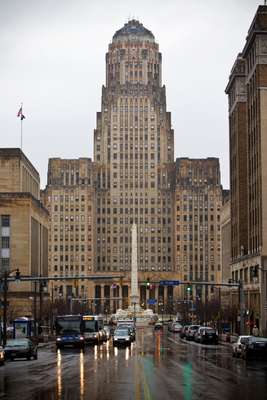
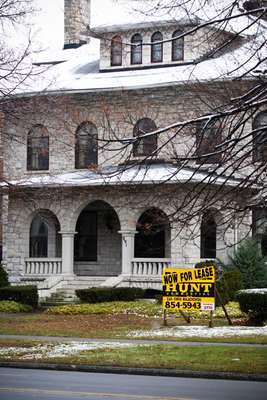
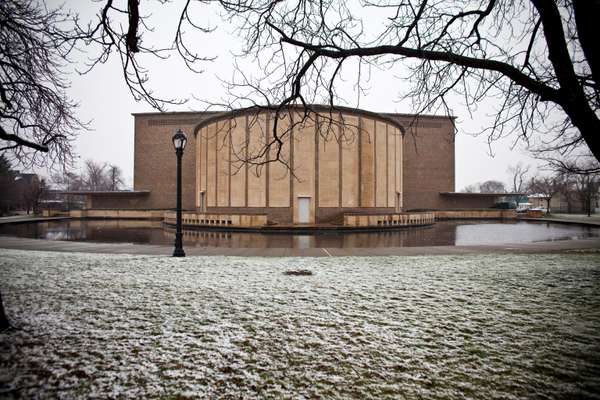
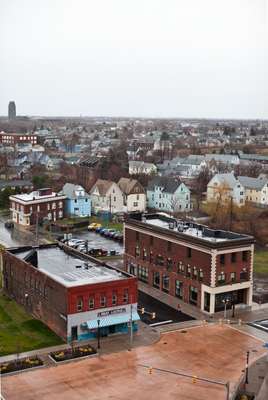


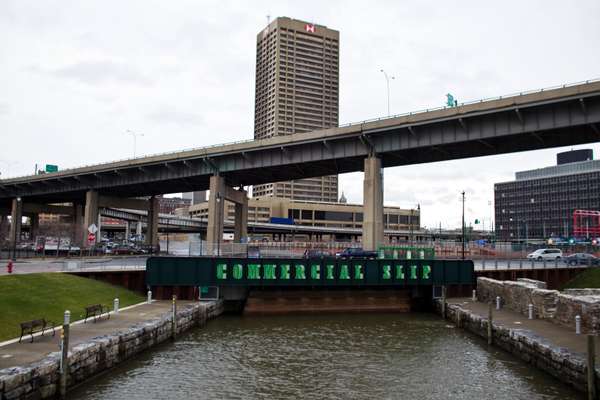
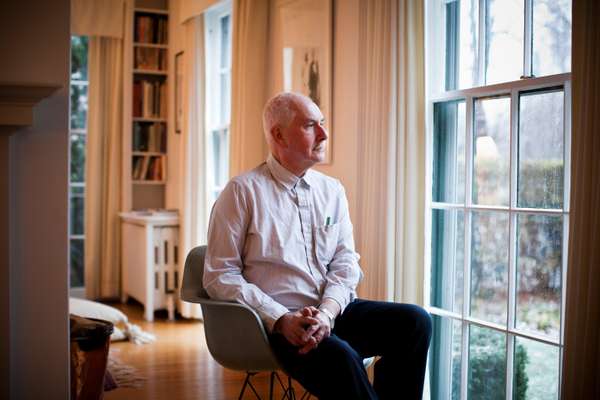
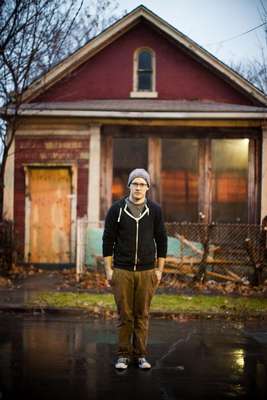
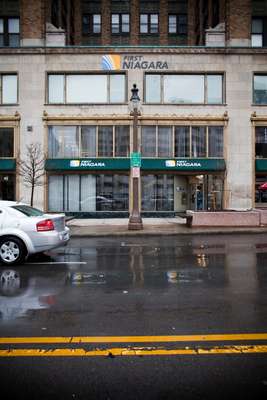
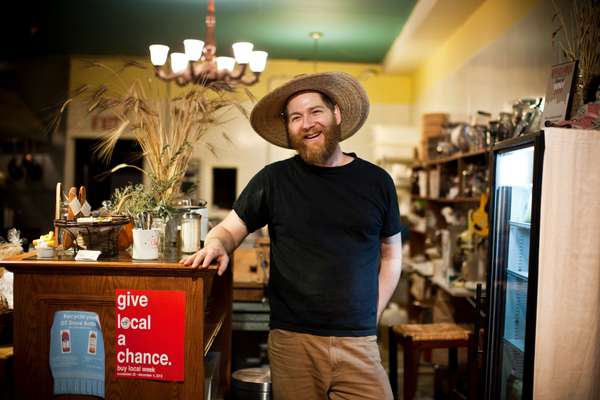
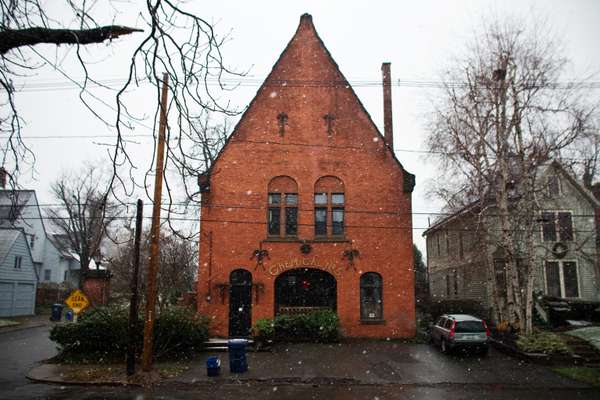
But the region peaked economically during the 1950s. Postwar suburbs lured residents from urban cores, while the death of heavy manufacturing meant fewer jobs for those who remained. Americans from the cold northeast and midwest began settling in the south and west. Buffalo lost half its population between 1950 and 2000; Rochester and Syracuse each shed one third.
There are few worse demographic omens in American life than seeing one’s community get older and whiter. New York City is a magnet for talent from around the world – by some measures it is the most international city on Earth – but upstate acts like a repellent. Even cities such as Rochester and Syracuse that are built around universities are home to rapidly ageing populations and do not have an influx of younger workers or immigrants to replace them in the workforce.
With US communities dependent on local tax revenues to fund basic services, a shrinking tax base spurs a vicious cycle. City halls are left to either raise taxes or cut basic city services that have a direct impact on the quality of life. Camden, New Jersey, for example, recently announced it would lay off half its police and a third of its firefighters. The result is the same: people and businesses no longer want to move into cities, further burdening public resources for those who stay. New growth gets pushed to the outskirts, depleting downtowns built for density and despoiling rural land with new development.
Few cities have dramatically broken this cycle. Those in upstate New York have some enduring advantages: good “bones”, as urban planners call housing stock and public spaces, and proximity to New York City and Toronto. There are more than 200 colleges and universities in the region, a greater number per capita than elsewhere in the country, and major cultural and tourist attractions. But the growing economic gap between upstate and down is responsible for a political antipathy between New York City and its suburbs and the rest of the state that has helped to paralyse state government.
Few have confidence that new governor Andrew Cuomo, a Queens native who came to office last month, can do much to alter that dynamic. City leaders perennially complain that upstate leeches tax dollars generated downstate, while conservative upstaters grumble constantly that city residents have swung state policies to the left. On and off for 40 years, New York City politicians have toyed with the idea of seceding as the 51st state. If they did, the upstate they left behind would be among the worst-off places in the country.
Buffalo bites back
New York's second city is enjoying its underdog status.
Buffalo bites back New York’s second city is enjoying its underdog status Buffalo’s inner harbour was once among America’s busiest trade gateways but recently has served as little more than a reminder of the city’s difficult past. Empty grain silos, once a symbol of industry and later a source of inspiration for visiting architects, sit alongside fallow land and the arena housing the local Sabres hockey team. Founded in 2005 with a mandate to bring life to the lakefront, the Erie Canal Development Corporation razed abandoned buildings with plans to erect an outdoor-sports superstore in their wake. In the summer of 2010, however, the retailer pulled out of the project, the type of recursive economic failure that is all too common in upstate’s cities.
But when Buffalo officials for waterfront development responded by adjusting its plans only slightly – envisioning a series of fake canals and an underground car park – citizens rebelled. Led by locals such as Mark Goldman, a businessman and historian who had been involved in the revival of the city’s downtown Chippewa Street into a bustling strip of restaurants and bars, citizen campaigners set to work on their own development strategy. Enlisting outside experts including Fred Kent of the Manhattan-based Project for Public Spaces, they drew up plans featuring larger canals, more routed to replicate the historical path of the Erie Canal that fed the city’s 19th-century wealth.
The development agency approved the scheme in November, which includes temporary marketplaces, a 120-acre park, and the rebuilding of an 1833 lighthouse. It is all targeted for completion during the summer of 2012. “The city was going down the wrong path,” Goldman explains. “There’s been a real reaction to what was thought of as an ill-conceived plan.”
Buffalonians may have lost faith in their political leadership – who helped preside over the city’s decline from one of the country’s wealthiest to one of its poorest – but the city’s surprisingly optimistic residents are often taking matters into their own hands. They are capitalising on what their city has to work with: a strong architectural legacy, an active university that has reinvested in a downtown campus and close proximity to not only Canada but also Niagara Falls – a source of cross-border business and tourist income.
“One of the ways to rebrand Buffalo away from the blue collar morass that it’s seen as is to be able to bring out those other storylines: architecture, heritage, and the environmental story,” says Kate Foster, director of the Regional Institute at the University of Buffalo. “The challenge that Buffalo and other cities like it are facing is that we know what we were in 1900, but what are we in 2010?”
Even as Buffalo’s fin-de-siècle greatness (it hosted a World’s Fair in 1901) still haunts the city, today’s residents feel the benefits of living in a city built in an era of massive civic wealth. Buffalo has some of the country’s most durable housing stock, industrial infrastructure and landscaped green spaces: Frederick Law Olmsted-planned urban parkways are studded with churches amid rows of large family homes in styles from Arts and Crafts-inspired simplicity to stone-fronted grandeur. Historically a centre for architectural innovation, buildings by Frank Lloyd Wright, Louis Sullivan and Eero Saarinen are scattered through the city.
Buffalo is New York State’s second largest city, but with a population of only 300,000 it’s one-30th the size of New York City. But Buffalo’s shrunken population is key to a quality of life that many residents prize. It means low rents, affordable historic homes, large areas of green space and modern offices in redeveloped factories. The small scale also means that fewer residents drive compared to other midwest metropolises, relying on neighbourhood amenities within walking distance and an efficient light-rail line. “Being a small city is very important,” says Brian Carter, dean of the University of Buffalo’s Architecture and Planning School. “There’s more of a citywide consensus among residents.”
Some even think that the city’s brain drain could give Buffalo a competitive advantage. The Buffalo Expat Network was launched last year as a grassroots effort to link the city’s expats with current residents. “From surviving multiple-foot snowfalls, to cheering for sports teams that never seem to bring a championship home, Buffalo expats are proud of the city,” says Tim Delaney, who co-founded the network after returning to Buffalo after spending time in Guyana and Ethiopia. The network is planning events on both coasts this year to help far-flung expats re-engage with other Buffalonians, and promote the city’s businesses.
The strategy reflects a local penchant for do-it-yourself economic development, and has some Buffalonians looking to the more recent past for inspiration. “This is the next frontier in the Rust Belt,” says Chris Hawley, an urban planner at City Hall and returned expat who co-founded the network. “Buffalo is like Portland was in the 1970s.”
The curse of care
A local economy too reliant upon the healthcare business
Syracuse is a healthcare hub. A state teaching hospital and a non-profit community hospital, two of the city’s four largest employers, form a stable base of high-paying jobs in hard times. But having a hospital as a leading employer can often be a bad sign: the local community is overwhelmed by an ageing population.
The US healthcare overhaul will change the terrain for cities such as Syracuse, which are likely to see their hospitals forced to consolidate, economise or languish under the new rules. Community hospitals have struggled financially for years, providing a safety net for millions of uninsured patients who could not afford care. Hospital revenue will increase when more Americans receive insurance coverage from public exchanges from 2014. The trade-off is that the payment system now rewards hospitals that produce better results at lower costs.
To do more with less, hospitals have to cut their bureaucracies and better coordinate and streamline care.
Even if hospitals manage to trim costs, it will be cold comfort to the local economy. “It’s not like a community hospital is going to become the Google of local healthcare,” says healthcare economist Jason Shafrin of research firm Acumen. A solid reputation for good healthcare is a nice perk for a city to have but not a big draw for businesses. Cities such as Syracuse have to revive other parts of their economy rather than wait for hospitals to save them.
Can the Northwest be won again?
Upstate New York has seen its downs. Here's our guide to the key locations in a region teetering on reinvention.
1.
Plattsburgh
The American hub for Canadian flyers
When the Pentagon shut down the Plattsburgh air force base in 1995, it looked like it would be a disaster for the local economy. But local authorities fought for federal funds to redevelop the site as a commercial airport, and in 1997 opened with the unlikely model of Bellingham, Washington, which is just south of Vancouver and gets most of its traffic from Canada.
Plattsburgh International Airport is 30km from Canada, and does almost all of its marketing north of the border. “Montréal’s US airport” has a handful of discount carriers, led by Allegiant, which target winter destinations in Florida. Of the airport’s 90,000 passengers each year, 85 per cent are Canadian. “We’ve outgrown the airport,” says North Country Chamber of Commerce vice-president Michele Powers. More people work at the airport today than was the case when it was a military base.
2.
Rochester
A city built on innovation, now having to refocus
In 1888, George Eastman introduced his Kodak camera, which took pictures on film instead of glass. Twelve years later, Eastman Kodak created the first point-and-shoot Brownie camera. It was no accident that Eastman’s inventions – which put photography truly in the hands of amateurs – came out of Rochester: 30 years earlier John Jacob Bausch and Henry Lomb had opened an optical shop that pioneered lens design.
Kodak, though, was slow to adjust to the digital era, and its one-time blue-chip stock now trades for less than $5 a share. Still, Rochester retains much of the industry infrastructure, cultivated through local universities and George Eastman House, a museum and archive. There is hope that the next great digital breakthrough could come from Rochester: officials say the city produces 2.33 patents for every 1,000 workers, more than five times the national rate. Two-thirds are in optics, imaging and photonics.
3.
Ithaca
The centre for the hoteliers of the future
Founded in 1922, Cornell University’s School of Hotel Administration was the first programme in hospitality management made available at university level.
Based in Ithaca, the school approached the city’s historic Statler Hotel to serve as a training ground – a hands-on model that has been replicated in universities across the country. It now has 60 full-time staff and a growing network of influential alumni.
The US hotel industry recovered more quickly than expected post-recession. While the property and job markets struggle, the hospitality sector is on the up, with income predicted to have increased 5.6 per cent in 2010, compared with a drop of almost 40 per cent the previous year.
As a focal point for hospitality research and training — and frequently a host to leading figures in the industry — Ithaca should be able to capitalise on the newfound buoyancy of America’s hotel market.
4.
Lake Placid
Ski facilities used for the 1932 and 1980 Winter Olympics may be shut down due to state budget cuts.
5.
Albany
The state’s median per-capita income is $23,389 (€17,671) but in its capital city – where more than a fifth of people live in poverty – it’s only $18,281 (€13,812).
6.
Buffalo
Within the city limits 72 per cent of homes were built before 1940. In its inner suburbs that figure is 16 per cent.
7.
Seneca Lake
There are more than 100 wineries in the Finger Lakes region.
8.
Massena
In 2009 General Motors closed an outdated plant producing its powertrain engine after nearly five decades, with a loss of 500 jobs.
9.
Utica
After major population loss, Utica has eagerly welcomed refugees, particularly from Bosnia, Belarus and Vietnam.
10.
Elmira
Until recently Elmira had the lowest single-family home prices in the US. But prices have jumped nearly 20 per cent in three years.
11.
Schenectady
The original HQ for General Electric, which once employed 40,000 people. Now just 3,000 work for GE.
12.
Cooperstown
The baseball Hall of Fame draws 350,000 visitors annually.
13.
Niagara Falls
A major wedding destination.


